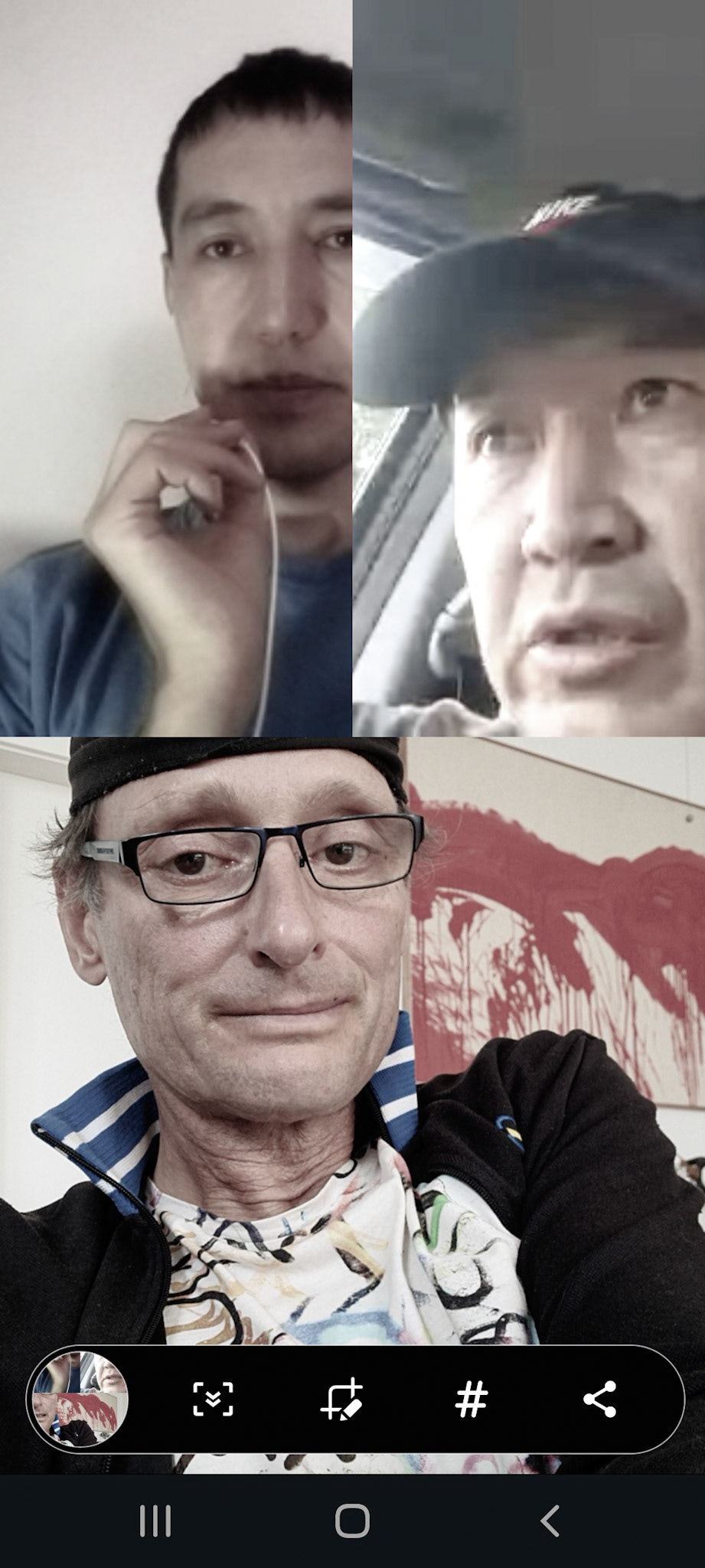The nomads of Kyrgyzstan live with their animals surrounded by seven thousand meter peaks in the Tian-Shan mountains.
They can only be found by those who travel by horse, off-road vehicle or racing bike.
The paths to the yurts and hermitages lead along the border with China and Kazakhstan.
The 3.460 m high Kalmak Ashu is already 1000 meters higher than the major passes of the Alps.
I have lost my buddies, there is no cell phone reception. It gets dark and freezing cold.
Boys call out, run up to me and give me chocolate from their pants pocket for strengthening.
The nomads in Kyrgyzstan are likely to have originated in the Altai Mountains of Mongolia.
Survival between steppe, semi-desert and high mountains requires livestock.
The heat in the yurt lasts for two hours, then it's ten below zero again.
First of all, the bicycle is taken care of.
I have breakfast with Jana, she just came from Afghanistan with her horse. Then we hike to the Kölsuu.
The Tash Rabat caravanserai was built in the 14th century as a shelter for travelers along the Silk Road.


With special permission I ride the Torugart Highway up to an altitude of 3,700m. Next to me the Chinese Uyghur Autonomous Region Xinjiang.
It's wonderful to be able to reach China on its own strength.
At Tosor Pass at 3,900 m a wolf welcomes me. In the meantime, my companions tow parents who had to spend the night in the car with their infant.
I cycle from hermitage to hermitage along the border between Kyrgyzstan and Kazakhstan.
Kasid erklärt mir mit strahlendem Gesicht auf Kirgisisch, dass sie hier in der Jurte mit ihren Geschwistern lebt.
Then come storms, heavy rain and snow.
Reached the Yssykköl. It is one of the largest mountain lakes in the world with its length of 182 kilometers.
Engilchek was once home to 9,000 miners and their families.
Zaire moved here from the capital two years ago. He works in the mine, which is now run by a Chinese company.
We have found the guest house.
They once had a hospital, a school and stores.
Today, twelve families live in Engilchek.
Livestock market in Karakol, every Sunday at dawn.
For Kyrgyz nomads, animals are everything.
Animals serve as food and transportation, signal wealth, and are means of barter.
Bargaining is an old Kyrgyz tradition and has a high social and community function.
Somehow I chat with the kids, then they proudly pose for my photo.
I help a local to cross the river. In thanks, he waves the index finger of his right hand toward his throat and fetches a bottle of vodka for us.
Already since dawn the whole family cooks soup from horse meat for 500 guests of today's wedding celebration.
The house of the family of five has a living room, a small kitchen, no running water and no toilet. The girl has been able to hear for a few weeks, thanks to a cochlear implant.
That is also Kyrgyz hospitality.
Horse meat is available only at the birth of a child, a wedding and a funeral.
The Ala-Too Square of the capital Bishkek gives an idea of the gigantonomy of bygone times.
The charm of Soviet architecture is complemented by huge SUVs. The car as the successor of the horse.
"Carrying on the fire" has a high religious-cultural meaning in Zoroastrianism.
The bride and groom come in the stretch limousine and celebrate in Las Vegas atmosphere.
I am invited to give a congratulatory speech. The longer, the greater the appreciation.
As a farewell, there is horse meat and kumys, fermented mare's milk.